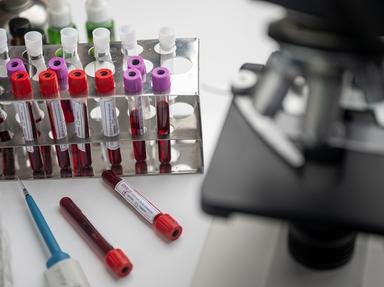Quiz Answer Key and Fun Facts
1. Approximately how many amino acids are involved in making proteins in humans?
2. The code Asp denotes which of these amino acids?
3. Amino acids join up into a large chain (polymer) to create what biological molecule(s)?
4. Okay, a question about the nature of sidechains. There are four main groups of amino acids: acidic, basic, polar and...?
5. Which of these is the one-letter code for glutamine?
6. F codes for which amino acid?
7. What is the three-letter code for the amino acid alanine?
8. Which of these three-letter codes is correct regarding the amino acid isoleucine?
9. Which amino acid is coded for by the letter H?
10. The amino acid lysine has the one-letter code L.
11. The amino acid coded for by the letter E is basic.
12. Which amino acid is coded for by the letter W?
13. Which amino acid is coded for by the letter Y?
14. Which amino acid is coded for by the three-letter code Met?
15. Last question; a bit of a bonus. An unspecified or unknown amino acid is given the one-letter code X, but what is the three-letter code?
Source: Author
reeshy
This quiz was reviewed by FunTrivia editor
crisw before going online.
Any errors found in FunTrivia content are routinely corrected through our feedback system.

